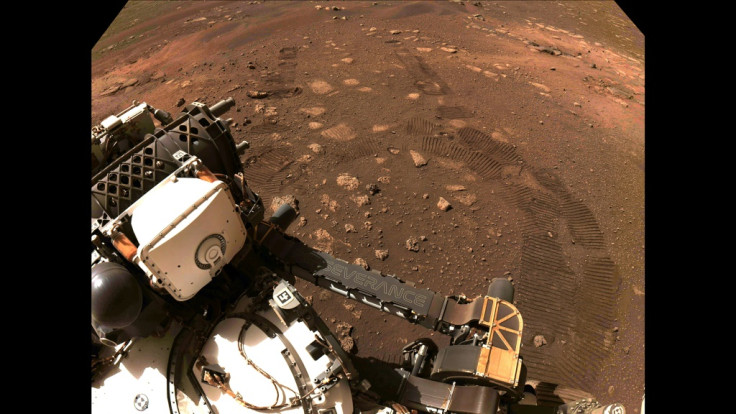NASA releases first audio recordings taken from Mars
NASA described the first audio recording as akin to "listening to a seashell or having a hand cupped over the ear."
The National Aeronautics Space Administration's (NASA) Jet Propulsion Laboratory (JPL) released audio recordings taken from the surface of Mars.
The historic recordings were posted on SoundCloud, which people can readily access to hear the elusive sounds for themselves. Two microphones on the the Perseverance Mars Rover recorded the first audio clip that was made available to the public. One can hear the familiar sound of the wind.
NASA gave a more detailed description of the said sound. It was like "listening to a seashell or having a hand cupped over the ear." NASA reported that the audio clip was obtained roughly 18 hours after the Perseverance landed on the Jezero Crater of the Red Planet.
"The rover's mast, holding the microphone, was still stowed on Perseverance's deck and so the sound is muffled," explained the space agency.
Things are sounding really good here. Listen to the first sounds of wind captured by my SuperCam microphone. This mic is located at the top of my mast. For this recording, my mast was still down so the sound is a bit muffled. https://t.co/0KpN30oIro
— NASA's Perseverance Mars Rover (@NASAPersevere) March 10, 2021
In the second clip, one can hear the sound of laser as it impacts on a rock target. The audio was recorded on March 2.
The caption on NASA's post revealed that there were 30 impacts heard from the recording. There were recordings that were somewhat louder than others. According to NASA, the differences in the zapping sounds that could be heard gives information on the target's physical structure. Some data derived from the laser impacts include the presence of weathering coatings and relative hardness.
? You’re listening to the first audio recordings of laser strikes on Mars. These rhythmic tapping sounds heard by the microphone on my SuperCam instrument have different intensities that can help my team figure out the structure of the rocks around me. https://t.co/nfWyOyfhNy
— NASA's Perseverance Mars Rover (@NASAPersevere) March 10, 2021
"The target, Máaz ('Mars' in Navajo), was about 10 feet (3.1 m) away," wrote NASA in the caption.
The two clips shared to the public were recorded using the SuperCam of Perseverance Mars Rover. The SuperCam is a rock vaporizing machine mounted on the rover's mast. It is a tool that will help the scientists look for fossils on Mars, reported New York Post.
Naomi Murdoch, Supérieur de l'Aéronautique et de l'Espace (ISAE-SUPERAO) researcher and planetary scientist, spoke in a joint news conference of NASA and the Centre National D'Etudes Spatiales (CNES) on Wednesday.
"First of all, on the surface of Mars, we have a very low atmospheric pressure. It's actually 150 times lower than on Earth. In addition, the atmosphere is made up of carbon dioxide. And, these two factors together mean that sound doesn't propagate in the same way on the surface of Mars as it does on Earth," explained Murdoch.
© Copyright IBTimes 2025. All rights reserved.






















